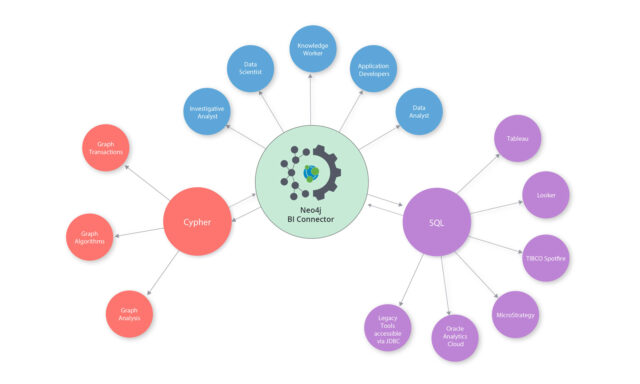If you’re looking for a robust graph database, Neo4j is a great option. It’s fast, scalable, and easy to use, making it excellent for many data-intensive applications.
Are you interested in learning more about Neo4j? If yes, this article will explain the basics of getting started with neo4j architecture and its robust graph database.
Introduction of Neo4j
It is a graph database management system developed by Neo4j, Inc. It is written in Java and accessible from software written in other languages using the Cypher Query Language.
Neo4j is used to create high-performance, scalable web applications. Web application examples include content management systems, e-commerce systems, social networking sites, recommendation engines, and knowledge management systems.
Graph databases have already seen significant adoption in various industries, including social media, telecom, financial services, and manufacturing, despite being a relatively new technology.
Installing and Documentation
Installing Neo4j is a reasonably straightforward process, and the documentation provides clear and concise instructions.
Download the installer from the official website, then run the installer. Follow the prompts to select the installation directory and components. Once the installation is complete, you can launch it from the Start Menu.
The first time you launch this database, you will be prompted to set up a password for the user account. After entering a password, you will be taken to the Neo4j browser interface. From here, you can begin creating nodes and relationships between them.
The documentation also provides detailed instructions on configuring Neo4j for your specific needs. For example, you can specify which database engine to use, enable authentication, set up HTTPS, etc.
What is Cypher Query Language?
Cypher is a query language, a native graph database. CQL is designed to be easy to learn and use yet powerful enough to support the most complex graph queries. It combines an elegant property graph data model with a declarative query syntax, making it easy to store, query, and update graphs.
This language is also highly extensible, allowing users to define their custom functions and operators. Thus, it is ideally suited for handling the complexities of modern graph data.
Graph Database Concepts of Neo4j
Some of the key concepts in Neo4j are:
- Nodes: Nodes are the starting point of every relationship in a graph. They can represent any entity such as people, businesses, accounts, or products.
- Relationships: Relationships connect nodes and provide the structure for how data is related in a graph. Relationships can have properties that describe the connection between two nodes.
- Properties: Properties are key-value pairs that give additional information about a node or relationship.
- Labels: Labels are used to create groups of similar nodes. This enables you to query the graph for all nodes with a particular label.
- Indexes: Indexes are used to find nodes or relationships based on their properties quickly.
Why Hire Neo4j Consultants?
There are many reasons why you might want to hire Neo4j consultants. Perhaps you’re looking to improve your business’s data management system, or you need help designing and implementing a new graph database. Whatever your reasons, working with consultants can provide several benefits.
They have a vast experience and knowledge about Neo4j and how it can be used to achieve specific goals. This means they can provide valuable insight and guidance during your project’s planning and implementation stages.
Additionally, consultants can offer technical support during the development and deployment phases, ensuring that your project is completed on time and within budget.
Finally, by working with consultants, you can tap into a valuable network of resources, Neo4j architecture, and contacts that can help you in the future.
With all of these benefits, it’s easy to understand why hiring consultants is an intelligent choice for any business.

















































































